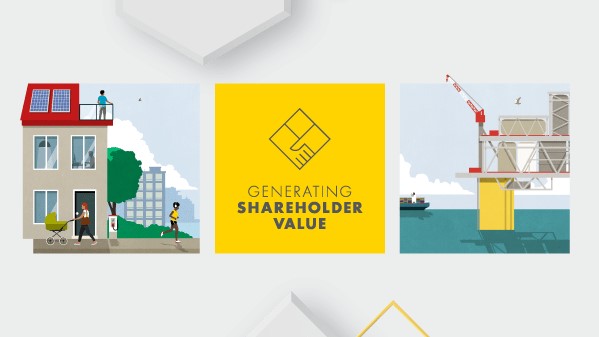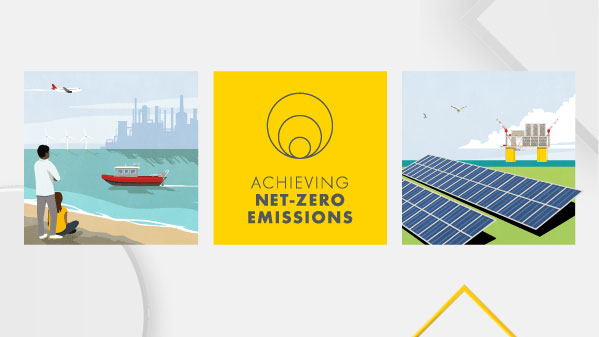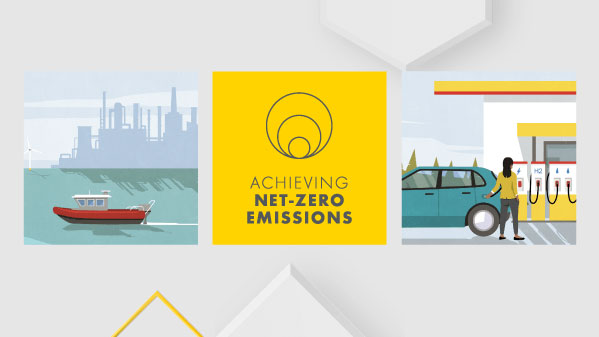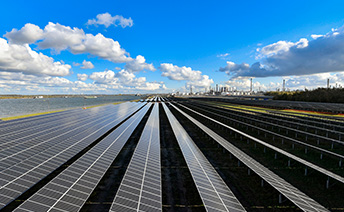International Air Transport Association (IATA)
IATA is the international trade association for the airline industry.[1] Shell is not a member but a strategic partner of IATA.
Membership of board/executive committee: None
- 2022 assessment outcome: Aligned
- 2021 assessment outcome: Aligned
Summary
Shell benefits from its strategic partnership with IATA, as the relationship allows us to connect with other companies and organisations in the aviation industry. Participation in IATA’s technical fuels forum allows us to engage on issues such as fuel management, compliance standards, and health, safety, security and the environment. We also benefit from IATA’s alternative fuels symposium.
We have found IATA to be aligned with our climate and energy transition-related policy positions.
We will remain a member of IATA. We will continue to engage the association on climate and energy transition topics. We will continue to track alignment between IATA’s climate and energy transition-related positions and our own.
Further information
Click on the sections below to read more.
Paris Agreement and net-zero emissions
- IATA stated in 2021 that “a resolution was passed by IATA member airlines committing them to achieving net-zero carbon emissions from their operations by 2050. This pledge brings air transport in line with the objectives of the Paris agreement to limit global warming to 1.5°C.”[2]
- In 2021 IATA adopted its ‘Fly Net Zero’ commitment, “a resolution for the global air transport industry to achieve net-zero carbon emissions by 2050. This commitment will align with the Paris Agreement goal for global warming not to exceed 1.5°C.”[3] [4]
- In 2022, IATA stated support for the International Civil Aviation Organization’s (ICAO) adoption of a Long Term Aspirational Goal to achieve net-zero emissions by 2050.[5]
Carbon pricing
- IATA has stated support for ICAO’s Carbon Offsetting and Reduction Scheme for International Aviation (CORSIA); in 2022, IATA “urged governments to strengthen CORSIA as the single global economic measure to manage aviation’s international emissions. This means avoiding new taxes or emissions pricing schemes; and eliminating the plethora of duplicative measures that has evolved in recent years.”[6] Shell and IATA have aligned positions on this issue.
Energy efficiency
No position
Decarbonised hydrogen
- In 2022, IATA stated that “hydrogen and electrically powered aircraft are part of aviation’s plan to achieve net zero emissions by 2050, but they are likely to be limited to short-haul routes. SAF is the proven solution for long-haul flying.”[7] It also stated: “Hydrogen and/or electric propulsion systems will most likely be available for short haul commercial flights by 2035.”[8]
- IATA is a member of the EU Alliance for Zero Emissions Aviation that was launched in 2022 with the objective of preparing “the entry into commercial service of hydrogen-powered and electric aircraft”.[9] [10]
Natural ecosystems
- IATA has stated support for the use of carbon offsets within ICAO’s CORSIA.[11] [12] IATA has stated: “Offsetting is not intended to replace efforts to reduce the sector’s carbon emissions through technology, operational and infrastructure advances. CORSIA will not make airlines strive any less to increase the use of SAF and advocate for greater production, increase fuel efficiency as well as roll out other technological developments – as part of the industry’s #FlyNetZero commitment.”[13] IATA has noted that offsets can be generated through forestry and natural climate solutions that can also bring biodiversity benefits; it also notes the importance of offset standards.[14] [15]
Carbon capture and storage
- IATA has stated: “Achieving net zero by 2050 will require a combination of maximum elimination of emissions at the source, offsetting and carbon capture technologies.”[16] Its strategy to achieve net-zero includes a statement that: “Any emissions that cannot be eliminated at source will be eliminated through out-of-sector options such as carbon capture and storage and credible offsetting schemes.”[17]
Environmental, social and governance (ESG) standards and benchmarks, sustainable finance taxonomies
- IATA has stated support for common benchmarks and standards for ESG reporting.[18] [19]
- IATA offers an Airline Sustainability Reporting Handbook to its airline partners which uses the GRI Standards.[20]
Coal
No position
Electrification with renewable or low-carbon power
- In 2022, IATA stated that “hydrogen and electrically powered aircraft are part of aviation’s plan to achieve net zero emissions by 2050, but they are likely to be limited to short-haul routes. SAF is the proven solution for long-haul flying.”[21] It also stated: “Hydrogen and/or electric propulsion systems will most likely be available for short haul commercial flights by 2035.”[22]
Gases and methane
No position
Road transport: Passenger cars and vans
No position
Road transport: Heavy-duty vehicles
No position
Heavy industry decarbonisation
No position
Aviation
- IATA has stated support for the principle of aviation decarbonisation and supported ICAO’s net-zero emissions target for 2050.[23] [24] In 2022, IATA stated it would “encourage ICAO to focus on a global framework for reaching the LTAG and any interim targets.”[25]
- IATA is a principal partner of the Air Transport Action Group (ATAG), which published the report Waypoint 2020: Balancing growth in connectivity with a comprehensive global air transport response to the climate emergency: a vision of net-zero aviation by mid-century.[26]
- IATA has stated strong support for the introduction of incentives for sustainable aviation fuel (SAF)[27], but opposes SAF mandates.[28]
- In its Annual Review 2022, IATA stated in relation to the EU Fit for 55 package: “With its aim to cut emissions across the European Union 55% by 2030, the European Commission’s ‘Fit for 55’ environmental legislation proposals are an opportunity to deliver a significant boost for sustainable aviation, unleashing investment in green technologies and operational efficiencies […] Advocacy efforts are focusing on persuading Europe to modify ‘Fit for 55’ to provide practical measures to boost the production of SAF and support the implementation of CORSIA.”[29]
Shipping
No position
Return to list of associations[1] https://www.iata.org/en/about/mission/
[2] https://www.iata.org/en/programs/environment/flynetzero/
[3] https://www.iata.org/en/programs/environment/flynetzero/
[4] https://www.iata.org/en/pressroom/pressroom-archive/2021-releases/2021-10-04-03/
[5] https://www.iata.org/en/pressroom/2022-releases/2022-10-07-01/
[6] https://www.iata.org/en/pressroom/2022-releases/2022-09-27-3/
[7] https://www.iata.org/en/pressroom/2022-releases/2022-06-21-02/
[8] https://www.iata.org/en/pressroom/2022-releases/2022-06-21-02/
[9] https://defence-industry-space.ec.europa.eu/eu-aeronautics-industry/alliance-zero-emission-aviation_en
[10] https://defence-industry-space.ec.europa.eu/document/download/e5f6c0c7-462a-4a3d-be80-09d95e0c3f2b_en?filename=AZEA%20-%20List%20of%20Members_240123.pdf
[11] https://www.iata.org/en/programs/environment/corsia/
[12] https://www.iata.org/contentassets/fb745460050c48089597a3ef1b9fe7a8/paper-offsetting-for-aviation.pdf
[13] https://www.iata.org/en/programs/environment/corsia/
[14] https://www.iata.org/contentassets/fb745460050c48089597a3ef1b9fe7a8/paper-offsetting-for-aviation.pdf
[15] https://www.iata.org/en/iata-repository/pressroom/fact-sheets/fact-sheet---offsetting-and-carbon-capture/
[16] https://www.iata.org/en/programs/environment/flynetzero/
[17] https://www.iata.org/en/pressroom/pressroom-archive/2021-releases/2021-10-04-03/
[18] https://www.iata.org/contentassets/75336281f63e4967ac36c9c935f2e473/wfs22-agenda.pdf
[19] https://airlines.iata.org/news/the-intersection-between-finance-and-sustainability
[20] https://www.iata.org/en/publications/store/airline-sustainability-reporting-handbook/
[21] https://www.iata.org/en/pressroom/2022-releases/2022-06-21-02/
[22] https://www.iata.org/en/pressroom/2022-releases/2022-06-21-02/
[23] https://www.iata.org/en/pressroom/2022-releases/2022-10-07-01/
[24] https://www.iata.org/en/iata-repository/pressroom/fact-sheets/fact-sheet----iata-net-zero-resolution/
[25] https://www.iata.org/contentassets/c81222d96c9a4e0bb4ff6ced0126f0bb/annual-review-2022.pdf
[26] https://aviationbenefits.org/media/167417/w2050_v2021_27sept_full.pdf
[27] https://www.iata.org/en/iata-repository/pressroom/fact-sheets/fact-sheet---alternative-fuels/
[28] https://airlines.iata.org/analysis/2050-net-zero-carbon-emissions
[29] https://www.iata.org/contentassets/c81222d96c9a4e0bb4ff6ced0126f0bb/annual-review-2022.pdf










